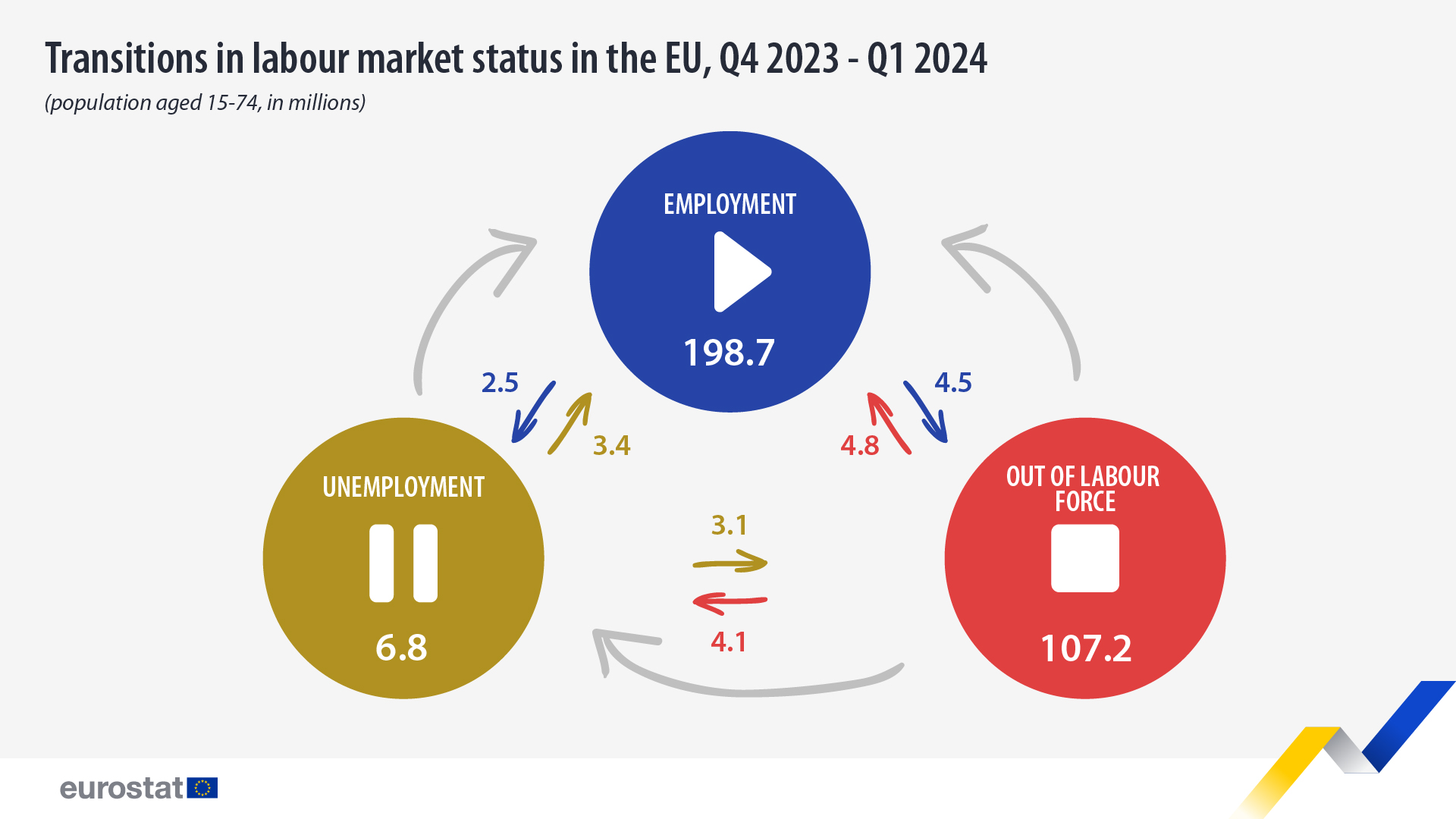After a decline in 2020 and 2021 due to the impact of the COVID-19 pandemic, the EU’s population has increased for the second consecutive year, rising from 447.6 million on 1 January 2023 to 449.2
Statistics
Between 2010 and the first quarter of 2024, house prices increased by 49% and rents by 24% in the EU.
Between the fourth quarter of 2023 and the first quarter of 2024, 3.4 million unemployed people aged 15-74 in the EU (25.5% of all unemployed in the fourth quarter of 2023) found a job.
In the EU, public and private expenditure on preventive care accounted for 6.0% of total health expenditure in 2021.
In the first quarter of 2024, seasonally adjusted GDP increased by 0.3% in both the euro area and the EU, compared with the previous quarter, according to a flash estimate published by Eurostat, th
The Euro area annual inflation rate was 2.4% in March 2024, down from 2.6% in February. A year earlier, the rate was 6.9%.
In 2022, 60.8% of students in upper secondary general education across the EU studied 2 or more foreign languages as compulsory subjects or as compulsory curriculum options.
In 2023 compared with 2022, hourly labour costs at whole economy level expressed in € rose by 5.3% in the EU and by 4.8% in the euro area.
In 2022, the life expectancy at birth in the EU was 80.6 years, up by 0.5 years from 2021.









